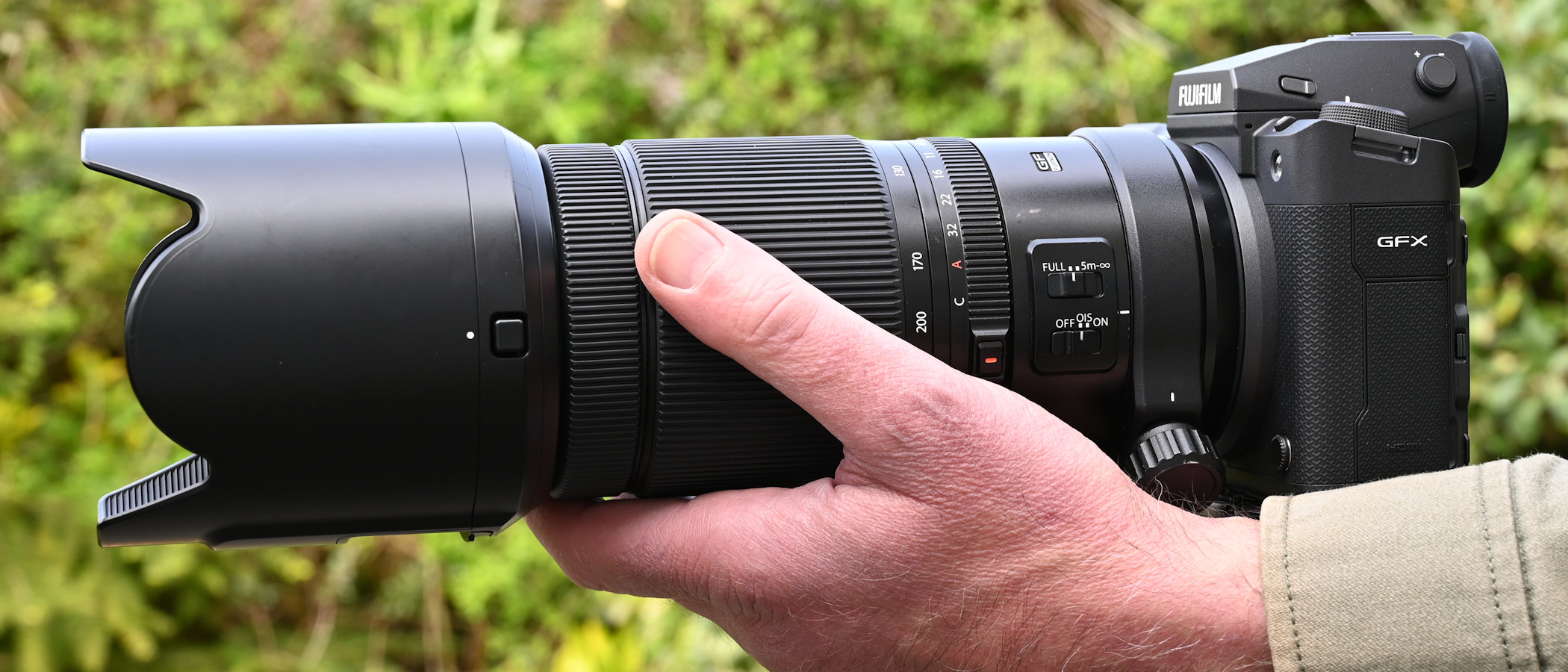
Fujifilm makes some fabulous medium format lenses for its GFX cameras but prioritizes primes. At the time of writing this review, primes outnumber zooms in the line-up by 12 to 5. The GF 100-200mm is the longest telephoto zoom in the range but, due to the kind of inverted crop factor of medium format image sensors, it still only has an ‘effective’ zoom range of 79-158mm in full-frame terms. For serious telephoto reach, that doesn’t compare too favorably with ‘trinity’ 70-200mm f/2.8 telephoto zooms for full-frame cameras.
On the plus side, if you feel the need for more pulling power, the GF 100-200mm is compatible with the Fujifilm GF 1.4X TC WR tele-converter, albeit with a narrowing of aperture to f/8. Whichever way you look at it, the GF 100-200mm sets its sights on being one of the best Fujifilm GF lenses and a worthy addition to the medium format section of the best Fujifilm cameras.
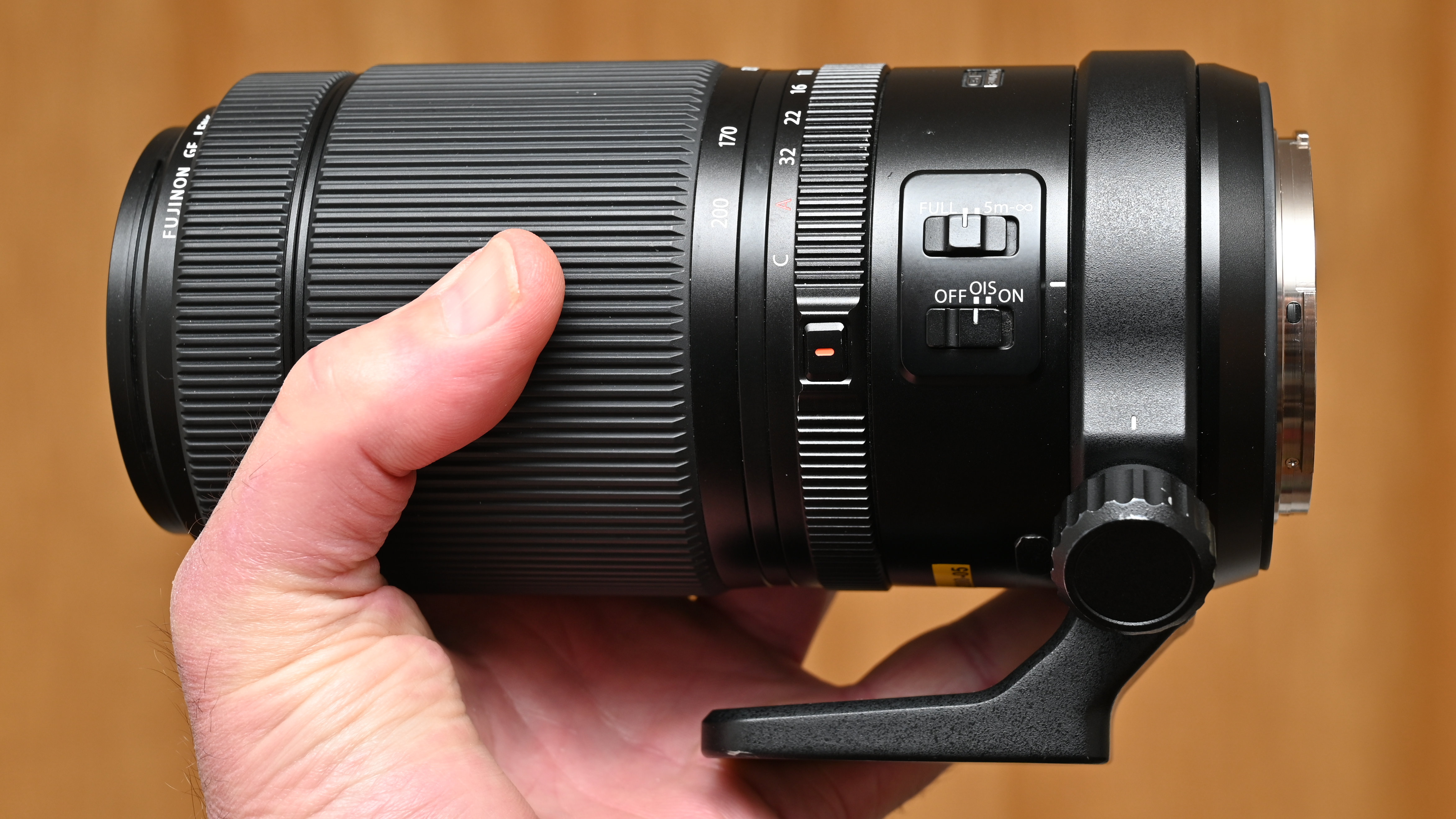
Fujifilm GF 100-200mm F5.6 R LM OIS WR: Specifications
Fujifilm GF 100-200mm F5.6 R LM OIS WR: Price & Availability
The GF 100-200mm came to the market back in early 2019 and has a price tag of $1,999 / £1,799 / AU$3,199 although, at the time of writing this review, it was discounted at most Fujifilm retailers in the USA. Either way, the price compares favorably with the company’s GF telephoto primes, which include the faster Fujifilm GF 110mm F2 R LM WR at $2,799 / £2,599 / AU$4,299, the longer and faster Fujifilm GF 250mm F4 R LM OIS WR ($3,299 / £2,799 / AU$4,599).
Fujifilm GF 100-200mm F5.6 R LM OIS WR: Design & Handling
Typical of telephoto zoom lenses, there’s a lot of glass in the GF 100-200mm, with 20 optical elements arranged in 13 groups. I feel that the modest zoom range and f/5.6 aperture help to keep the size and weight to manageable proportions, despite the lens needing to deliver an extra-large image circle, suitable for medium format Fujifilm GFX cameras. In a nutshell (although it would be a big nut), the lens measures 90x183mm and weighs in at 1,050g.
That’s actually only about two-thirds the weight of some 70-200mm f/2.8 zooms for full-frame cameras. Even so, the lens is supplied complete with a removable tripod mounting ring. This enables a better balance, especially when shooting in portrait orientation, and the balance is retained very well in all shooting settings, thanks to the lens’s fully internal zoom and focus mechanisms. As such, there’s no inner barrel that extends during zoom or focus adjustments.
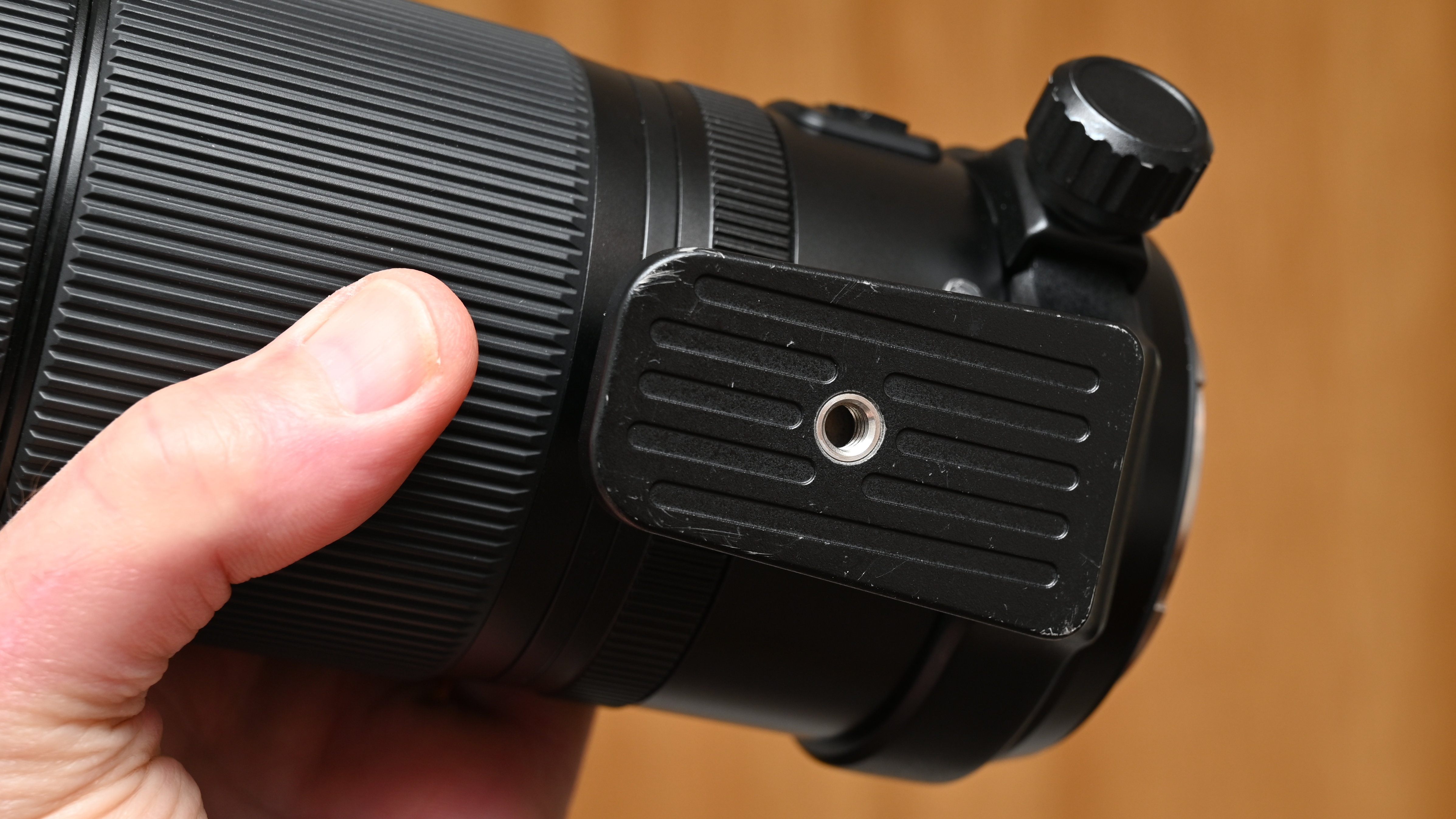
Getting back to the glass for a moment, the lens features one aspherical element and two Super ED (Super Extra-low Dispersion) elements, the latter aiming to boost clarity and reduce chromatic aberrations. Fujifilm’s high-tech Nano GI coating is applied to minimize ghosting and flare.
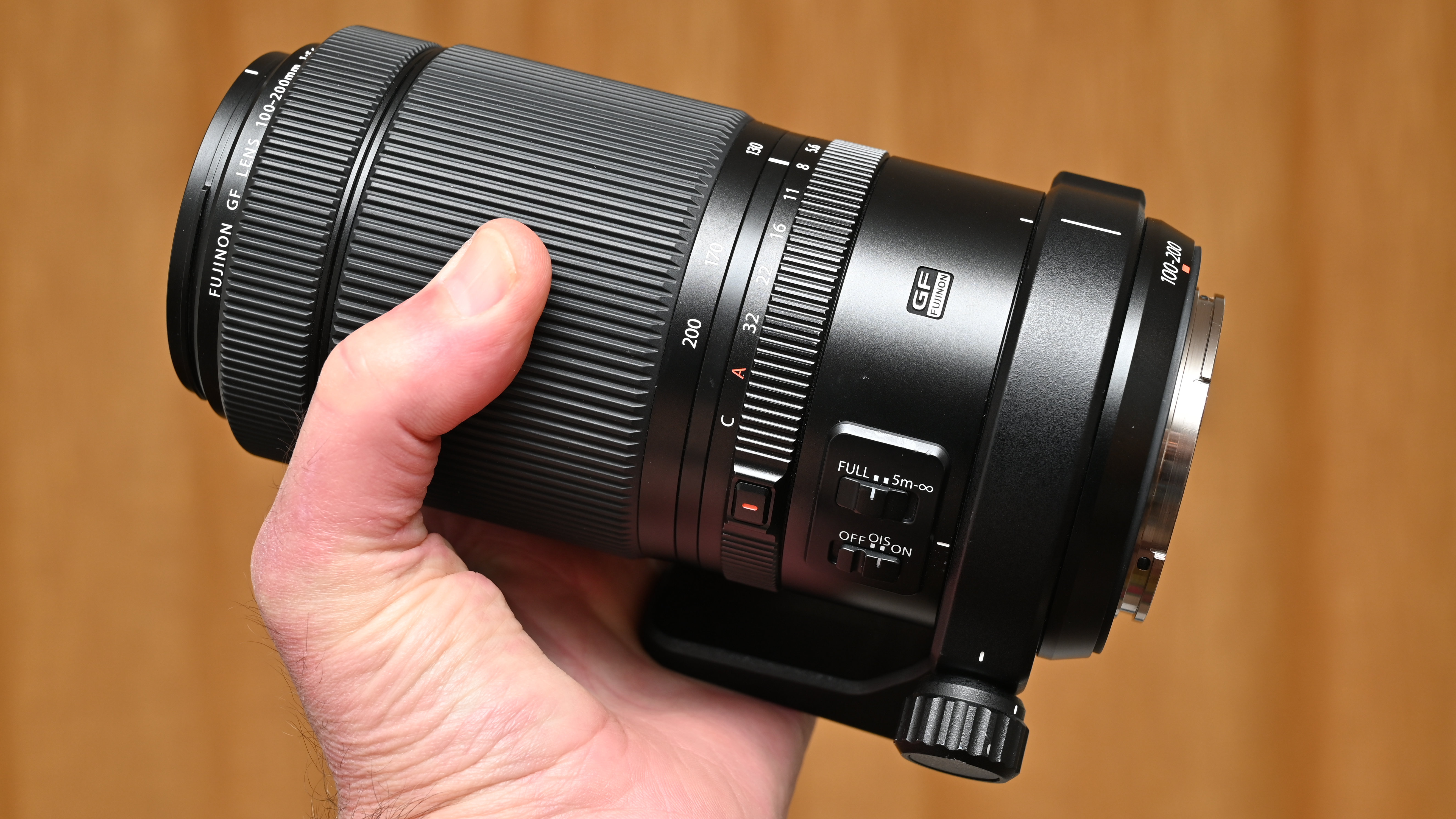
Despite being supplied with a tripod mounting ring, I generally favor shooting handheld with telephoto lenses for freedom of movement, especially for sports, action, and wildlife scenarios. At a shade over a kilogram, the lens is comfortable for even long periods of handheld shooting but, as with any telephoto lens, camera shake is an ever-present danger.
As featured in recent GFX cameras, IBIS (In-Body Image Stabilization) tends to be less effective at telephoto focal lengths, so I’m pleased that the GF 100-200mm features optical stabilization, rated at 5-stop performance. There’s an on/off switch for the stabilizer but no secondary switchable panning mode.
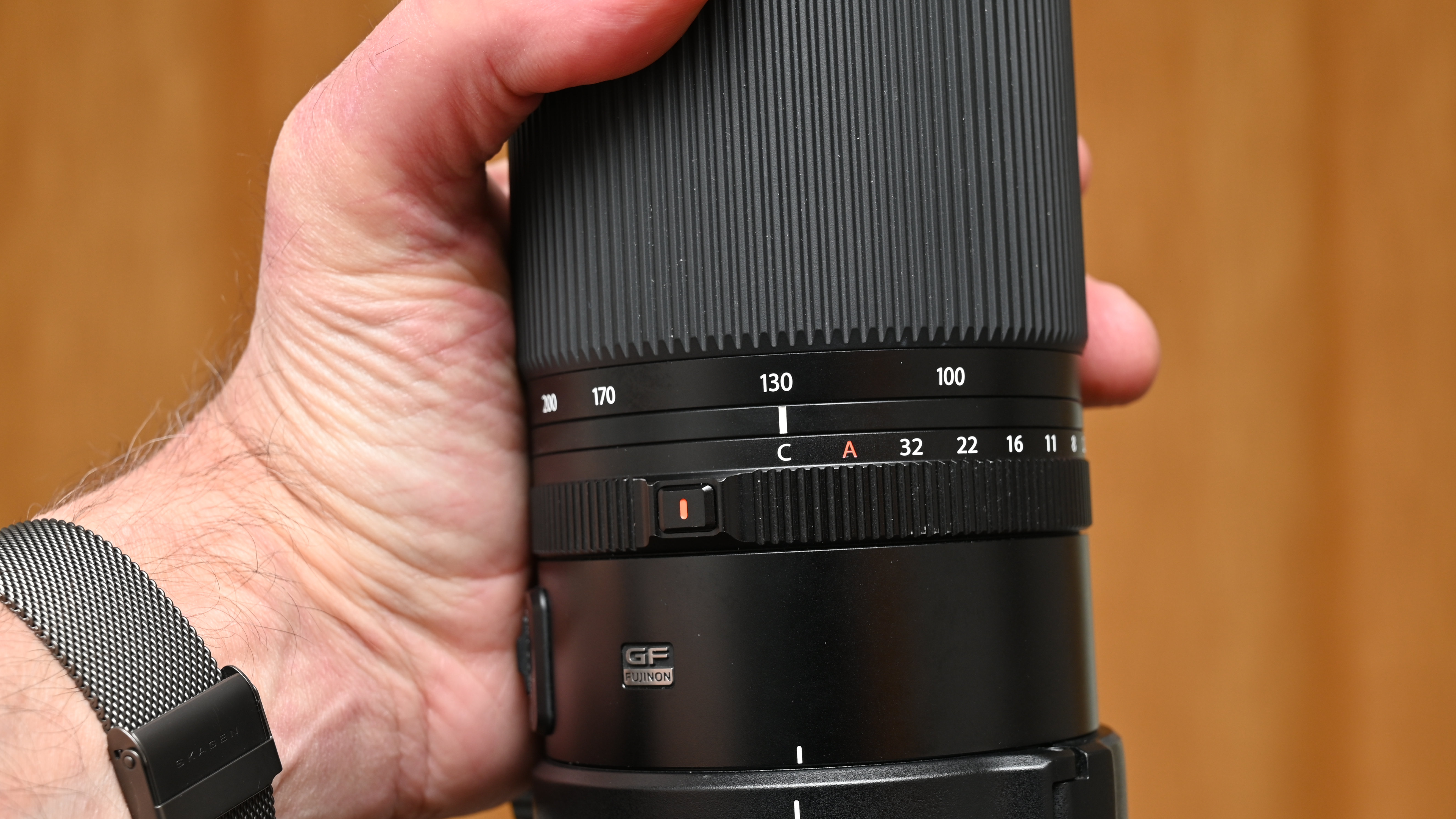
Autofocus is based on a now typical lead-screw stepping motor. In this case, it drives the relatively small middle section of elements, which helps to give a fast, snappy performance for shooting stills. As usual, smooth and virtually silent autofocus transitions are enabled for shooting video.
The minimum focus distance is 0.6m at the short end of the zoom range, and 1.6m at the long end. That can be frustrating if you’re shooting close-ups and zooming in, only to find that the object distance becomes too close. On the plus side, for more regular focus distances that you’d use with a telephoto lens, there’s an autofocus range limiter that can lock out the range closer to 5m.
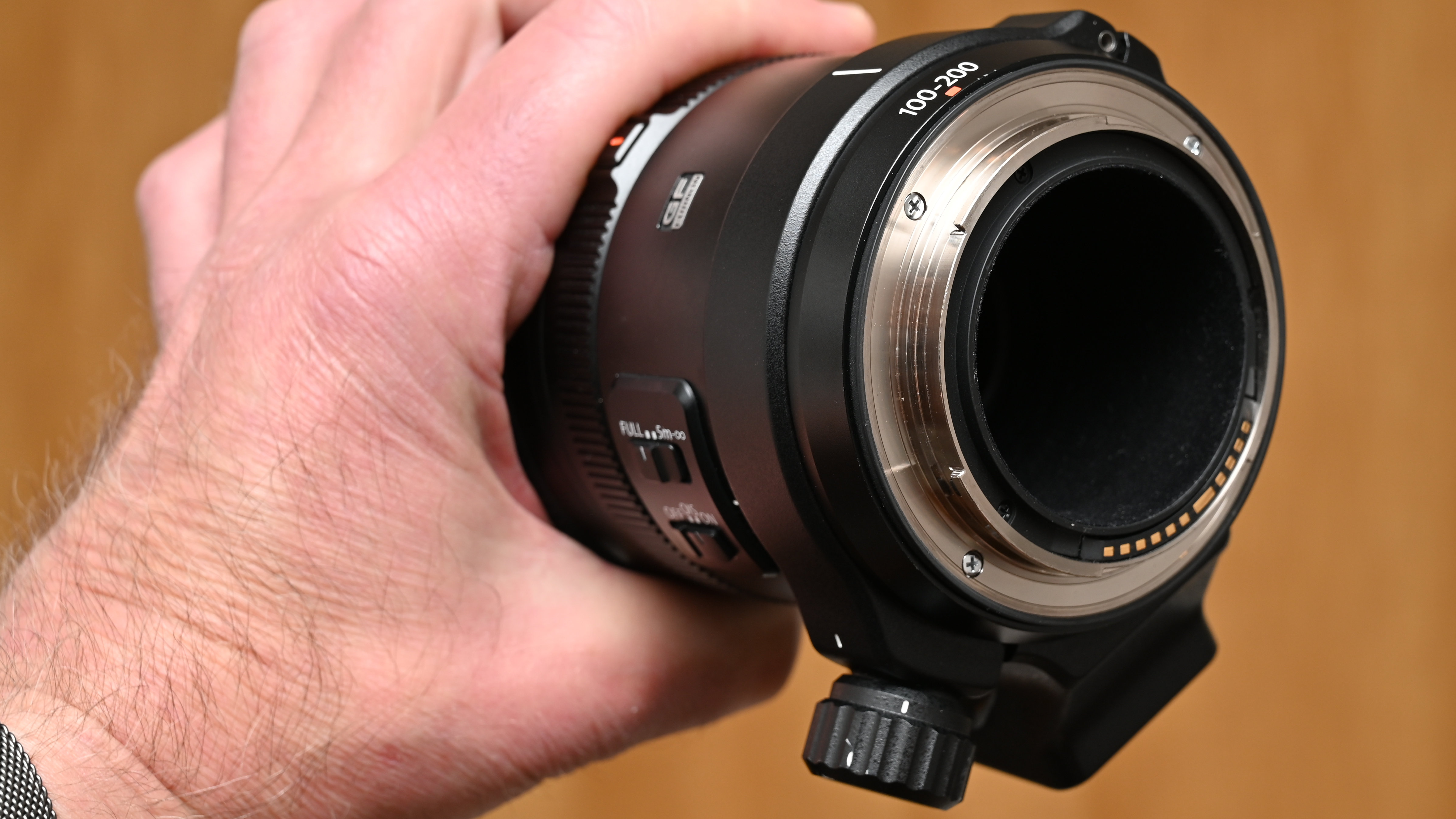
Typical of Fujifilm GF lenses, this one features an aperture control ring, with one-third f/stop click steps. There’s also the usual ring lock release button, which operates in A and C positions. Auto enables the aperture value to be set automatically by the camera body, whereas Command allows aperture adjustment from the camera’s command dial. Videographers might be upset that there’s no de-click option for the aperture ring.
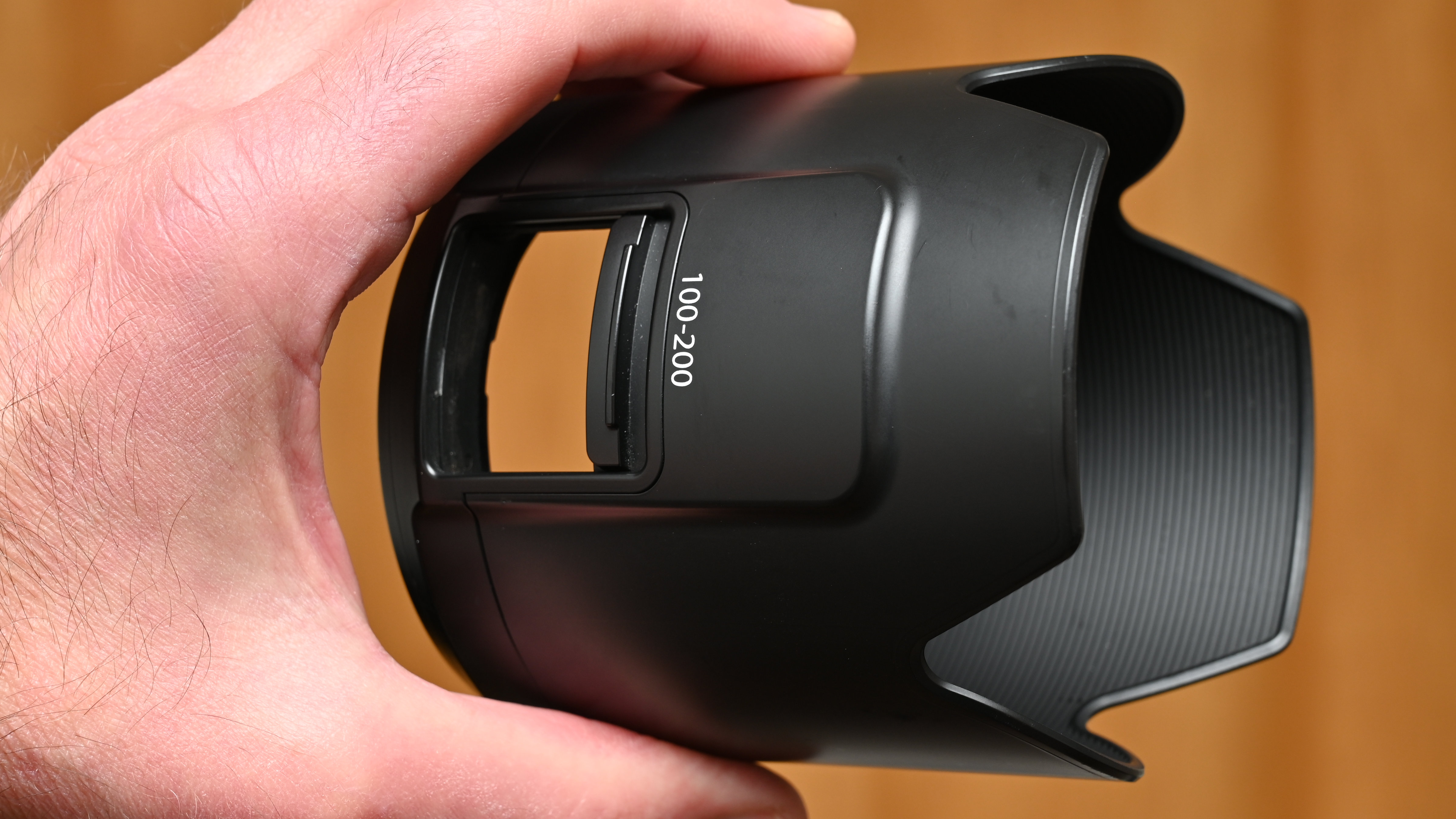
Fujifilm GF 100-200mm F5.6 R LM OIS WR: Photo Performance
I tested the Fujifilm GF 100-200mm F5.6 R LM OIS WR with a Fujifilm GFX 100 II camera body I found that, to some extent, the resolving power of the lens was able to do justice to the 102-megapixel image sensor of this camera, sharpness being effectively enhanced during handheld shooting by the effective 5-stop optical stabilizer. As the lens isn’t particularly ‘fast’, shooting wide-open at f/5.6 is often preferable, especially if you need to freeze motion in action shots.
I enjoyed excellent center-sharpness throughout my testing, throughout the whole zoom range, even at the widest aperture. However, sharpness drops off noticeably in the middle region between center and edge and becomes relatively disappointing towards the extreme edges and corners of the image frame. The lens simply can’t compete with GF telephoto prime lenses that I’ve used in this respect.
Color fringing is quite minimal but pincushion distortion can be noticeable, throughout the entire zoom range. As I’ve mentioned, it can feel a little frustrating that the overall 2x zoom range is rather modest, with a maximum ‘effective’ 158mm focal length in full-frame equivalence.
The following pair of shots was taken of the same subject from the same position, at focal lengths of 100mm and 200mm. They therefore show the full extent of the overall zoom range.


Fujifilm GF 100-200mm F5.6 R LM OIS WR: Sample Images
The example images in the following gallery were taken in sunny conditions at Bristol Docks in the UK, using the lens with a Fujifilm GFX 100 II camera body.






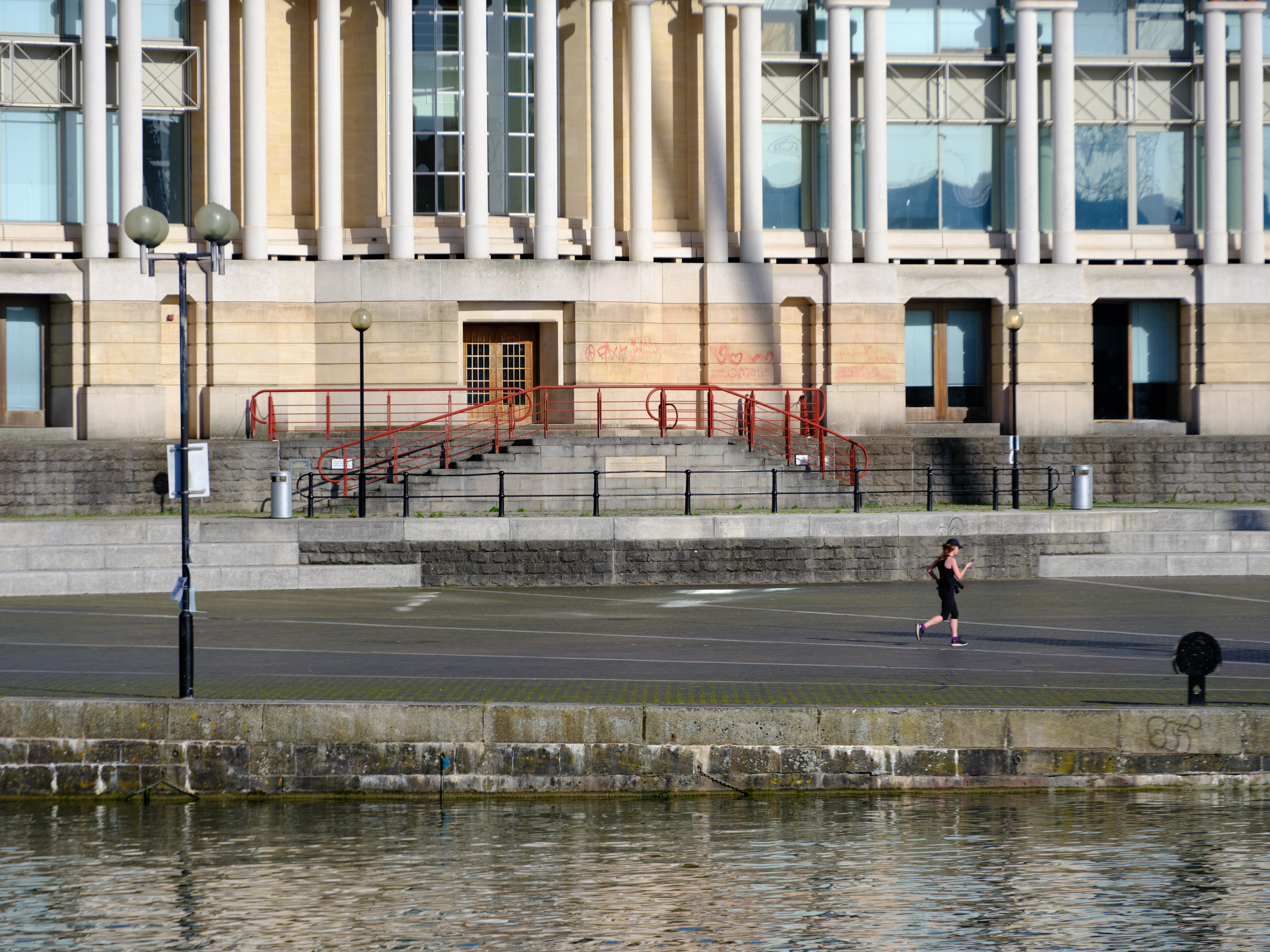






Fujifilm GF 100-200mm F5.6 R LM OIS WR: Lab Results
We run a range of lab tests under controlled conditions, using the Imatest Master testing suite. Photos of test charts are taken across the range of apertures and zooms (where available), then analyzed for sharpness, distortion and chromatic aberrations.
We use Imatest SFR (spatial frequency response) charts and analysis software to plot lens resolution at the center of the image frame, corners and mid-point distances, across the range of aperture settings and, with zoom lenses, at four different focal lengths. The tests also measure distortion and color fringing (chromatic aberration).
Sharpness:
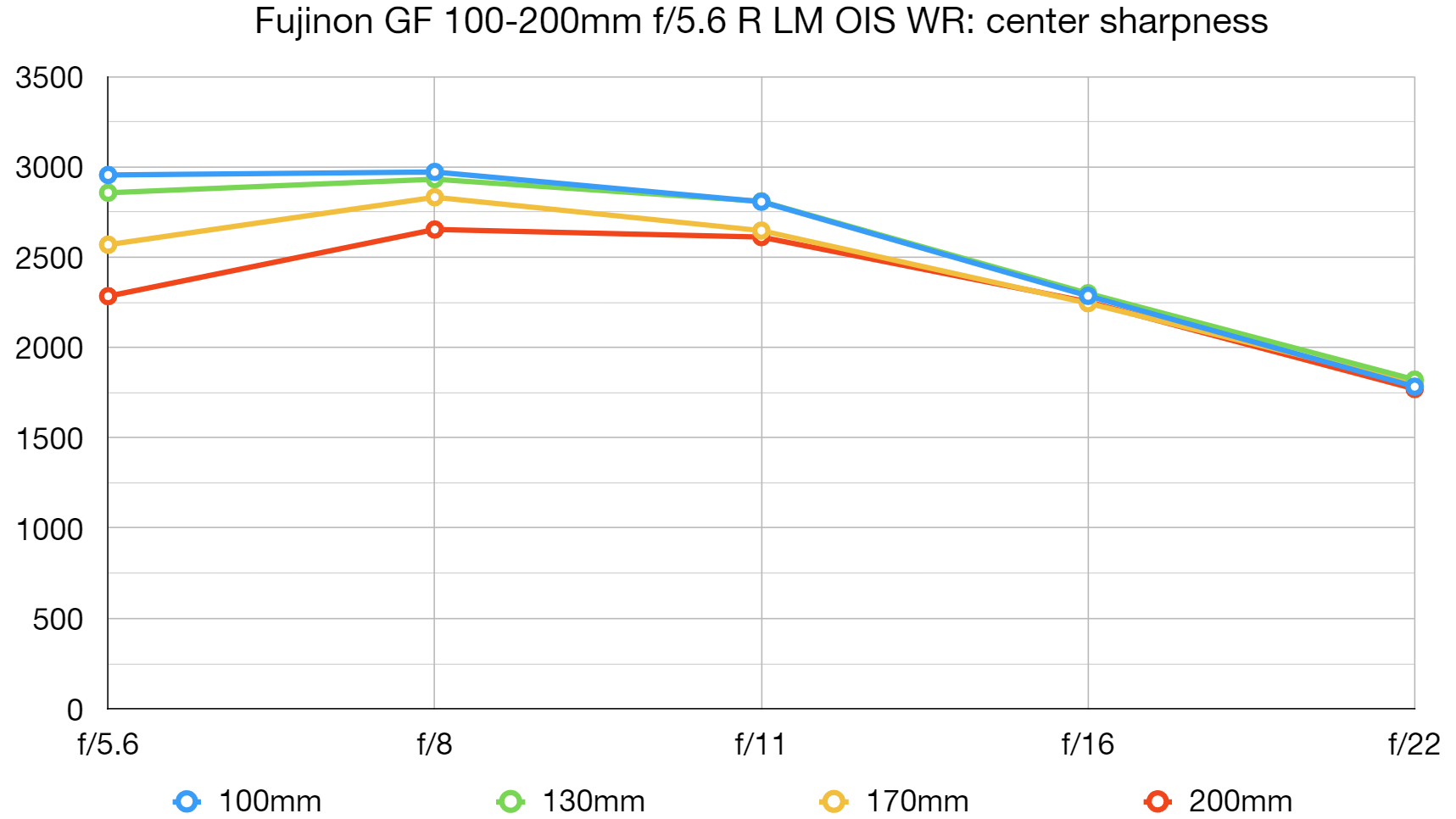

This telephoto zoom certainly isn’t the sharpest tool in Fujifilm’s GF box. It’s good at the center of the image frame but comparatively poor towards the mid-to-edge region. The lens also lags behind Fujifilm’s GF 20-35mm and GF 32-64mm wide-angle zooms in this respect.
Fringing:
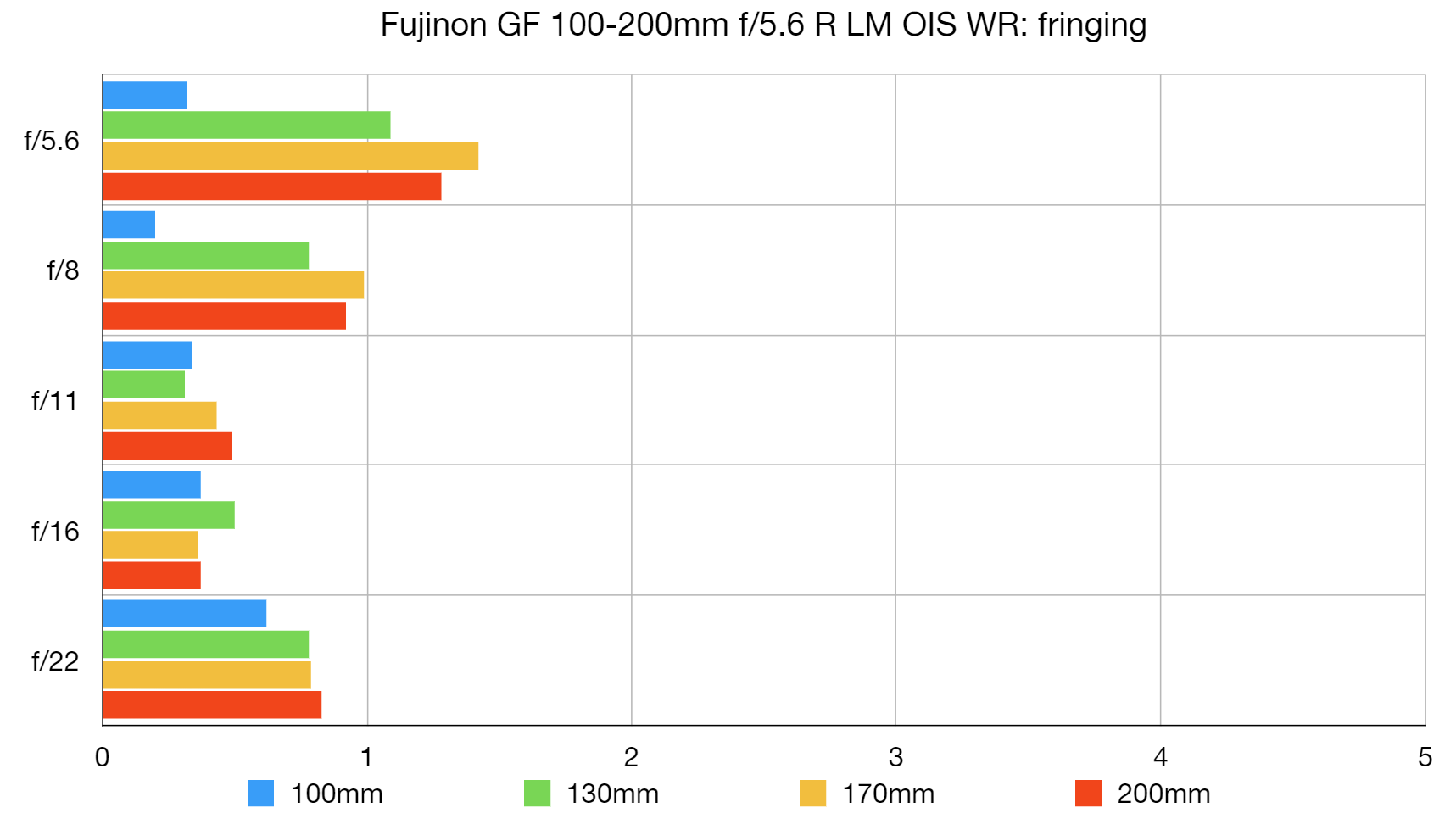
Color fringing is minimal throughout the whole zoom range, and at all aperture settings.
Distortion:
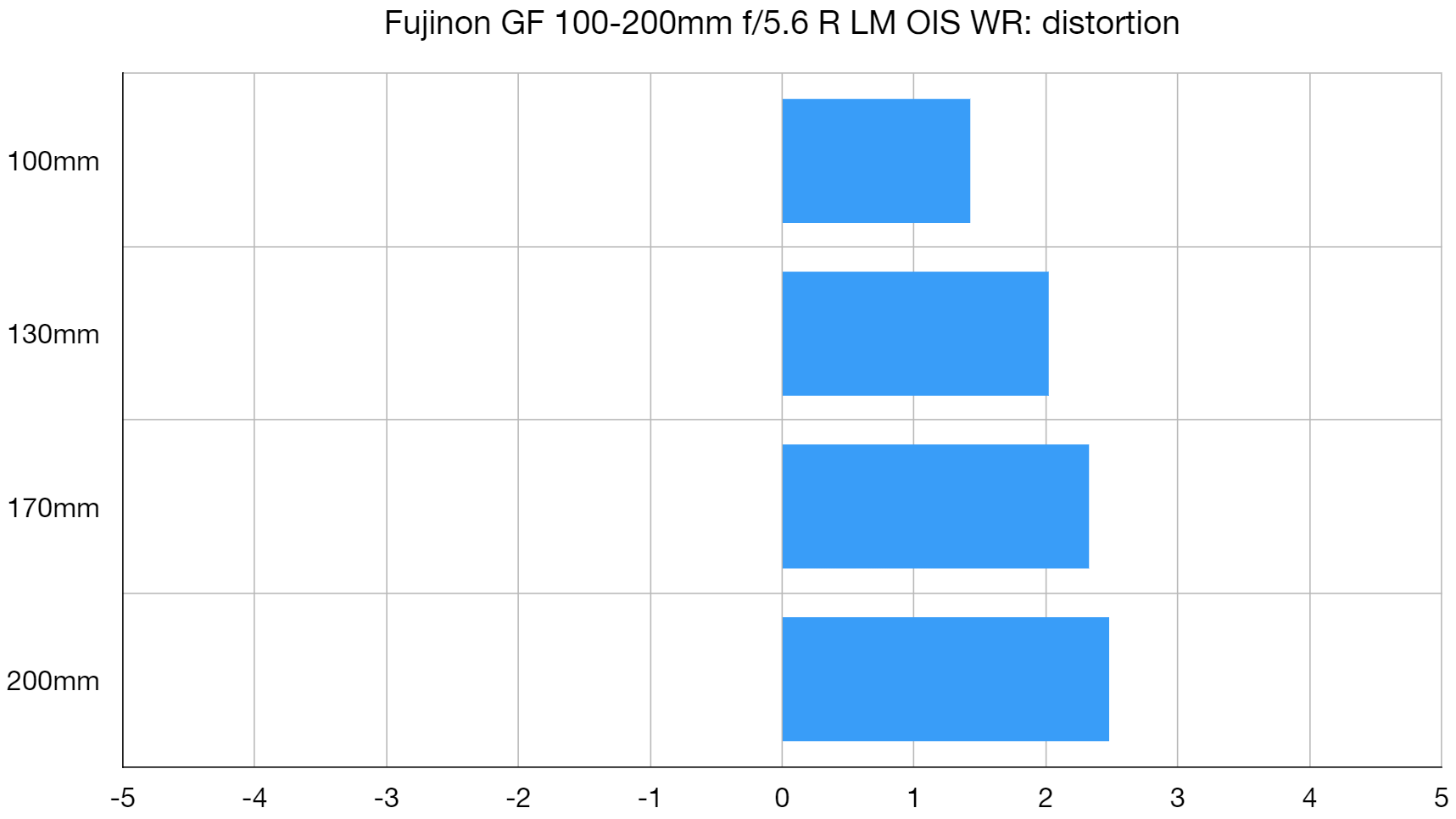
Pincushion distortion can be a little noticeable at the shortest zoom setting, a little more so at mid to long focal lengths.
Fujifilm GF 100-200mm F5.6 R LM OIS WR: Verdict
Fans of prime lenses will often tell you that you should ‘zoom with your feet’. Sometimes, however, I find that’s just not possible. In sports photography, I’m often limited to a specific spectating area, for wildlife I might be holed up in a hide, and even for telephoto landscape shots, there can be insurmountable obstacles on my part.
This telephoto lens delivers most of the Fujifilm GF quality and performance that I’ve come to expect from the prime line-up while adding zoom versatility. However, sharpness is comparatively lackluster away from the central region of the image frame. I also wish there was a greater zoom range on tap, which would make the lens even more versatile.

Should you buy the Fujifilm GF 100-200mm F5.6 R LM OIS WR?
✅ Buy this...
- You like zoom versatility
- Constant f/5.6 aperture
- Compatible with 1.4x teleconverter
🚫 Don't buy this...
- Fairly limited zoom range
- You’d prefer a faster prime
- You want more telephoto reach







